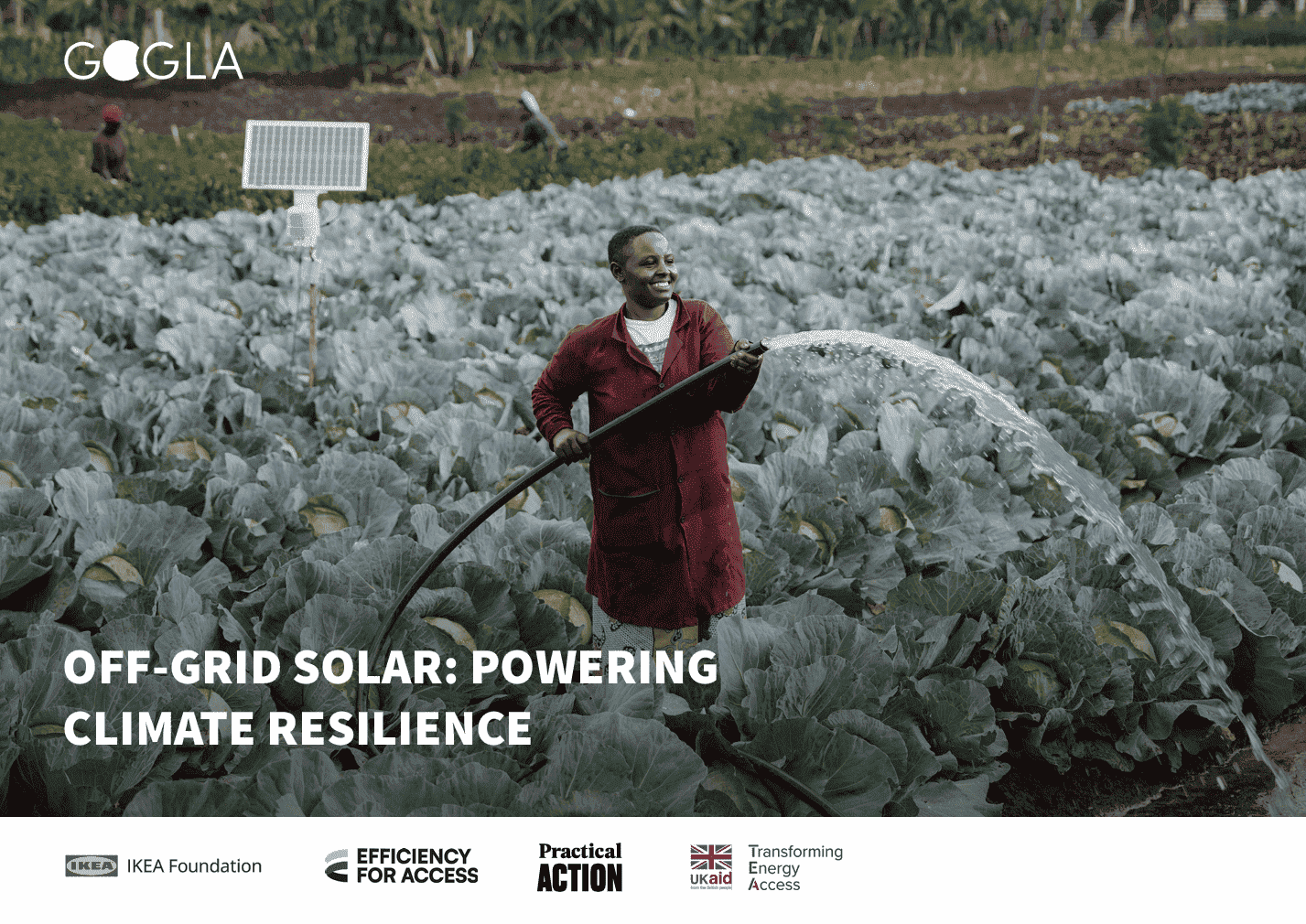Powering Climate Resilience: The Role of Off-Grid Solar
 |
rapport Mar 2025 ; 30 pages
Ed. GOGLA - Amsterdam
Téléchargeable sous format: PdF
Téléchargeable chez l'éditeur
Résumé:
Sans accès fiable à l’électricité ni aux équipements essentiels — tels que les pompes à eau pour améliorer la production agricole ou les dispositifs de communication pour transmettre des alertes en cas d’urgence — les communautés vulnérables au climat et en situation de précarité énergétique manquent des outils nécessaires pour faire face aux aléas climatiques et s’adapter à l’évolution des conditions environnementales.
Ce rapport présente des études de cas et des données illustrant la manière dont les solutions solaires hors réseau contribuent à renforcer la résilience et l’adaptation dans quatre domaines clés : les infrastructures et services essentiels, les moyens de subsistance résilients face au climat, l’accès à l’information climatique et aux systèmes d’alerte précoce, ainsi que la réponse et la reprise après catastrophe. Abstract:
Without reliable electricity supply and key appliances, such as water pumps to increase crop production or communications devices to relay emergency information, energy poor, climate vulnerable communities lack the tools they need to combat climate hazards and adapt to changing conditions.
This report provides case studies and data to highlight the ways that off-grid solar solutions are contributing to resilience and adaptation across four impact areas: critical infrastructure and services, climate resilient livelihoods, climate information and early warning systems, and post-disaster response and recovery. Contents:
Key definitions ....................................................................4
1. Introduction to the report .........................................6
Report Objective ..................................................................7
What is Climate Resilience and Adaptation? .......................7
What are Off-Grid Solar Technologies? ...............................8
Off-Grid Solar Resilience and Adaptation Framework …......8
Off-Grid Solar Resilience and Adaptation Sector Guidance .8
Who should use the Off-Grid Solar Resilience and Adaptation Framework and Sector Guidance? .9
1. Resilience and adaptation: four key impact areas .10
2. Critical infrastructure and services ........................11
Fast, durable electricity infrastructure for climate vulnerable communities ..11
Using off-grid solar to power healthcare and other public infrastructure ......12
4. Climate resilient livelihoods ..................................15
Job creation .....................................................................15
Powering enterprise ........................................................16
Increasing the potential for savings .................................17
Increasing financial inclusion ...........................................17
Increasing food security ...................................................18
5. Climate information and early warning systems ....21
Access to critical adaptation information .........................21
Access to early warning information .................................22
6. Post-disaster response and recovery .......................24
Post-disaster emergency response ....................................26
Post-disaster recovery .......................................................26
7. Conclusion and recommendations ..........................28
Key findings .......................................................................28
Recommendations .............................................................29
Public-Cible:
Mots clefs: |
changement climatique - adaptation (CI) (DT) (OP) (ope) , énergie solaire (CI) (DT) (OP) (ope) , usage productif (CI) (DT) (OP) (ope) |
Pays concernés: |
Bénin (CI) (DT) (OP) , Côte d'Ivoire (CI) (DT) (OP) , Ethiopie (CI) (DT) (OP) , Inde (CI) (DT) (OP) , Kenya (CI) (DT) (OP) , Malawi (CI) (DT) (OP) , Mozambique (CI) (DT) (OP) , Nigeria (CI) (DT) (OP) , Ouganda (CI) (DT) (OP) , Tanzanie (CI) (DT) (OP) , Zambie (CI) (DT) (OP) , Zimbabwe (CI) (DT) (OP) |
Editeur/Diffuseur: |
|
GOGLA
-
Global association for the off-grid solar energy industry - Amsterdam - Pays Bas |
En cas de lien brisé, nous le mentionner à communication@pseau.org